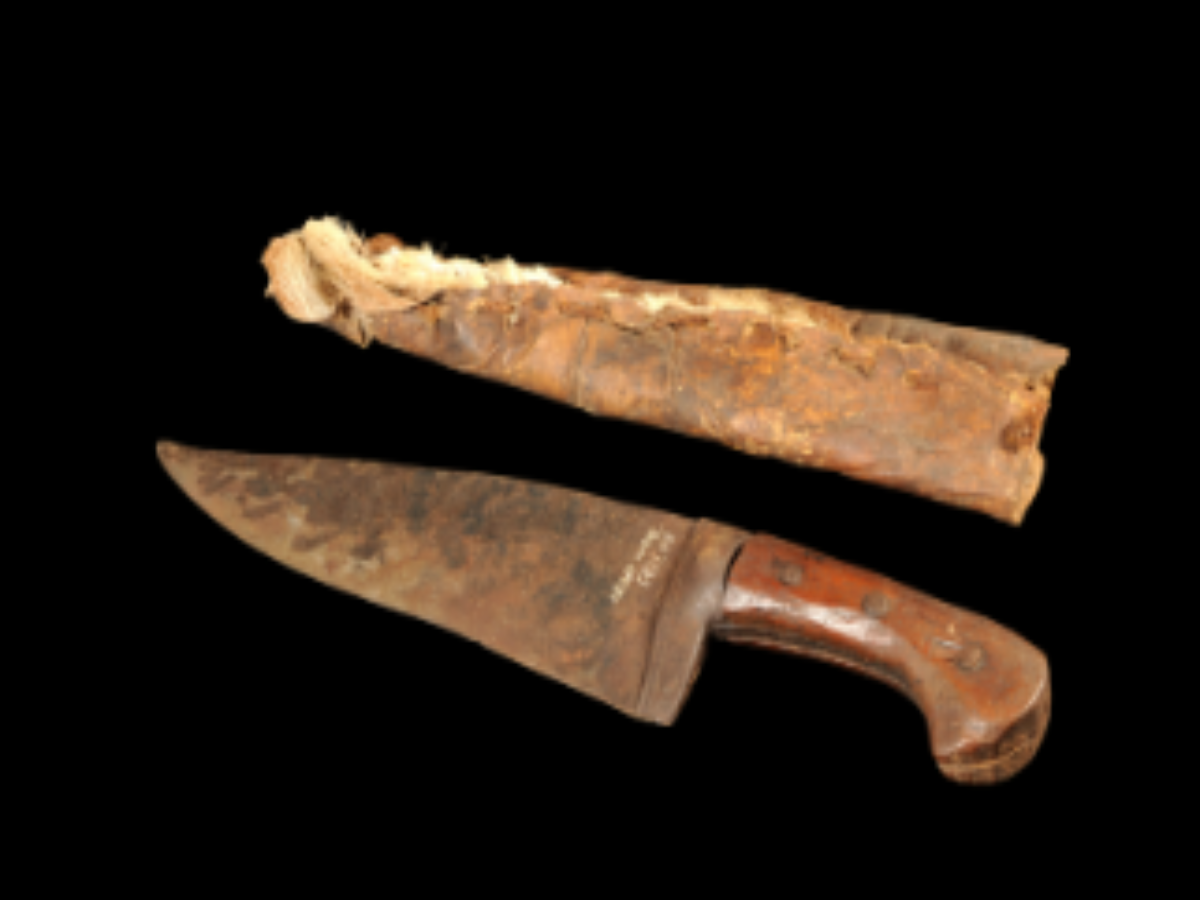State
Tribe Name
Art Type
short description
This is a simple iron knife with a wooden handle and a skin cover, for utility by the Chenchus, a forest-dwelling, indigenous community, who live largely in the forests of Nallamala Hill areas in Andhra Pradesh and Telangana. The knife expresses everything concerning the Chenchus and their forest life-that life based on dependence on forest products and handmade tools for their very existence. The Iron Blade runs for the greater part in its working shape, one side sharpened and slightly tapered with the other half being blunt so to perform functions varying from hunting to food processing to tool making. The handle, which is on one side of the working tip, is ergonomic, composed of two pieces of wood that have been riveted together on the underside of the blade, while the butt end of the grip is bent inward to assist in gripping tightly when work with the knife.
Thumbnail

Filter Postion
Right
Filter Background
Off
Theme
Filter Header Image

content
Image

description
This is a simple iron knife with a wooden handle and a skin cover, for utility by the Chenchus, a forest-dwelling, indigenous community, who live largely in the forests of Nallamala Hill areas in Andhra Pradesh and Telangana. The knife expresses everything concerning the Chenchus and their forest life-that life based on dependence on forest products and handmade tools for their very existence. The Iron Blade runs for the greater part in its working shape, one side sharpened and slightly tapered with the other half being blunt so to perform functions varying from hunting to food processing to tool making. The handle, which is on one side of the working tip, is ergonomic, composed of two pieces of wood that have been riveted together on the underside of the blade, while the butt end of the grip is bent inward to assist in gripping tightly when work with the knife.
The Found Hide Sheath stitched with Bark String is an indication of the knife utilizing anything available in nature around it. The sheath protects the blade of the knife, thus enabling it to be stored safely and conveniently transported. Very few would potentially place the Chenchus amongst the recognized Particularly Vulnerable Tribal Groups (PVTGs) of India because of their hunting and gathering life; further, we shall mention their vast knowledge of their fully indigenous ecologies. This knife, along with many others, participates fully in the daily drudgery of the Chenchu people: it defines self-sufficiency, craftwork, and sustainable production of their livelihoods
The Found Hide Sheath stitched with Bark String is an indication of the knife utilizing anything available in nature around it. The sheath protects the blade of the knife, thus enabling it to be stored safely and conveniently transported. Very few would potentially place the Chenchus amongst the recognized Particularly Vulnerable Tribal Groups (PVTGs) of India because of their hunting and gathering life; further, we shall mention their vast knowledge of their fully indigenous ecologies. This knife, along with many others, participates fully in the daily drudgery of the Chenchu people: it defines self-sufficiency, craftwork, and sustainable production of their livelihoods
Image Mode
landscape
promoted
On
Verified
Off
